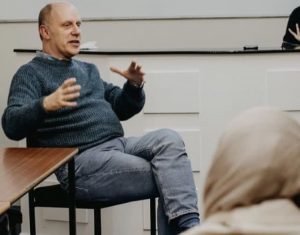
A few subscribers have asked me to expand further on the role of the ACE, and this is a transcript of an interview I did with fellow ACE Mark Reynolds a few years ago. It still has relevance today and should answer any questions I have received over the past few months.
Meducate: What can you tell me about the difference between a Role Player and an ACE (Associate Clinical Educator)?
Mark: A role player is involved in clinical communication, in that they play opposite a medical student as a patient or colleague in order to to improve their learning in terms of their technique of clinical communication. The associate clinical educator is also trained as a role player but is also trained in the body system examination so they are a hand on resource for the student to work on. The ACE then feeds back how well the student carries out that examination.
Meducate: You mentioned the term “body systems” what do you mean by that?
Mark: The basic body systems, from the point of view of the medical world, would be the cardiovascular, respiratory, gastrointestinal, neurological and musculoskeletal systems. We are trained to give feedback on their examination technique. Techniques such as percussion, auscultation and palpation. We never teach pathology, that’s up to an academic tutor who normally works alongside us.
Meducate: So the academic tutor teaches the pathologies and the theory, and you are the resource? A bit like a living mannequin?
Mark: Yes, we are a living resource able to give feedback on the technique as well as our extensive knowledge of the OSCEs and what is required in those academic exams. At first Techniques like Percussion and Palpation are often a problem for new students, and we can guide them in the correct technique as well as ensuring they’re in the correct position on the body.
Meducate: And because you’re also a communications expert, you can give feedback on their ability to communicate effectively and build rapport with the patient.
Mark: Absolutely yes. Communication is a vital part of the examination process and it would be remiss of me to allow a student to carry on if they couldn’t build rapport with the patient.
Meducate: So can you describe a typical session with an ACE?
Mark: So normally a body system is picked for the day and the ACE will be working with four to six students. Sometimes the clinician may do a live demonstration using the ACE as the model, and then the students will be taken through the various pathologies they may come across on a typical patient. The students would then be left to work with the ACE, and they would then give feedback about how well they are doing. Having a “Talk the Walk” approach works very well, as we can direct the student toward the correct method right from the start. Sometimes we may run a scenario alongside the physical examination and thereby making it more realistic. With the help of the clinician present, we will also include a management plan and how to explain that to the patient in layman’s terms. We can also present various pathologies to the student such as asymmetrical breathing, antalgic gait, Shortness of breath and many more. We even have a member of the team who can create ulcers, bruising, and other physical signs using moulage.
Meducate: I have heard students say that they feel more relaxed when working with an ACE can you expand on that?
Mark: Yes, when a student has a clinician in the room they feel that they are being judged. Which of course is true. We are there as a resource, a tool, if you will to help them develop without judgement. It is true that we assess them, but not professionally. We are not qualified Medics!
Meducate: ACEs are often used in OSCEs to great effect. How does that work?
Mark: During an OSCE it is not possible for the examiner to feel what is going on such as palpation, and that’s where we can give our feedback about how well the palpation went. Whether it was painful or too light. Because of our intensive hands on training, we know what a good technique is. This ensures that the PA is safe to practice once qualified. It should be remembered too that we have probably been involved in thousands of OSCEs, so we have an extensive experience, often much more than the examiners themselves. Examiners often remark on how extensive our knowledge is!
Meducate: Better than a real patient?
Mark: Yes, very different. A patient will not be qualified to give feedback. Of course, working with real patients is also valuable to the learning process.
Meducate: Thanks for taking time out to chat with us, Mark.
